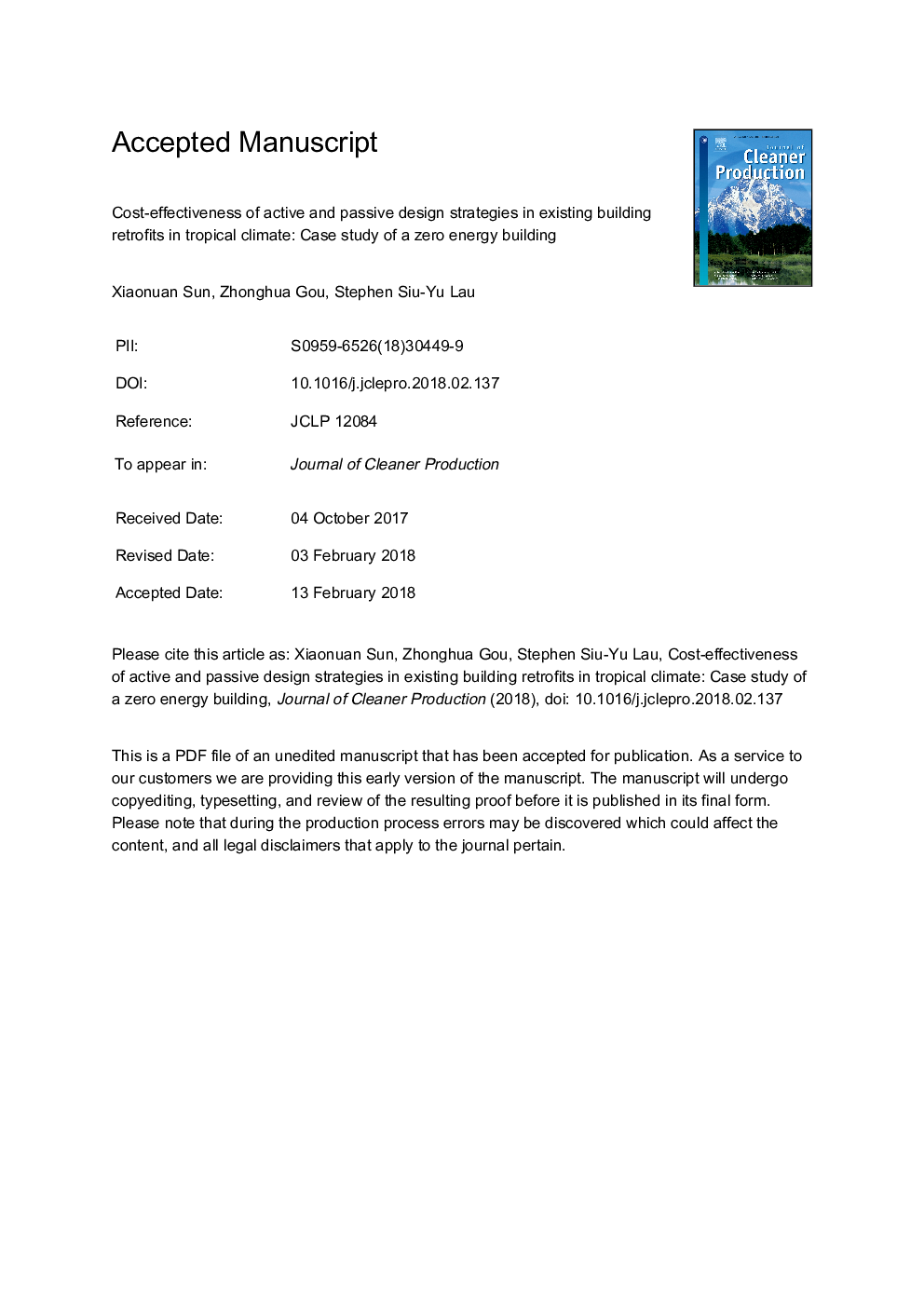| Article ID | Journal | Published Year | Pages | File Type |
|---|---|---|---|---|
| 8096923 | Journal of Cleaner Production | 2018 | 37 Pages |
Abstract
This research investigated the first zero energy building (ZEB) in Southeast Asia which was retrofitted from an existing building and incorporated diverse passive and active design strategies for the tropical climate. The study disclosed the efficiency improvement through each individual design strategy and also compared the cost-effectiveness of active and passive categories. The most cost effective active strategy was efficient lighting; and the second was efficient air conditioning systems. The most cost effective passive strategy was lighting pies; and the second was lighting controls. Generally, passive strategies might have longer period of payback. It should be noted that the ZEB was a test-bedding project; therefore, the finding on passive design cost-effectiveness should be cautiously interpreted considering the scale of applications. The research suggests that active and passive strategies should be integrated into building design to optimize the energy performance. Particularly, passive design shall be applied in a large scale to have significant energy improvements.
Keywords
Related Topics
Physical Sciences and Engineering
Energy
Renewable Energy, Sustainability and the Environment
Authors
Xiaonuan Sun, Zhonghua Gou, Stephen Siu-Yu Lau,
